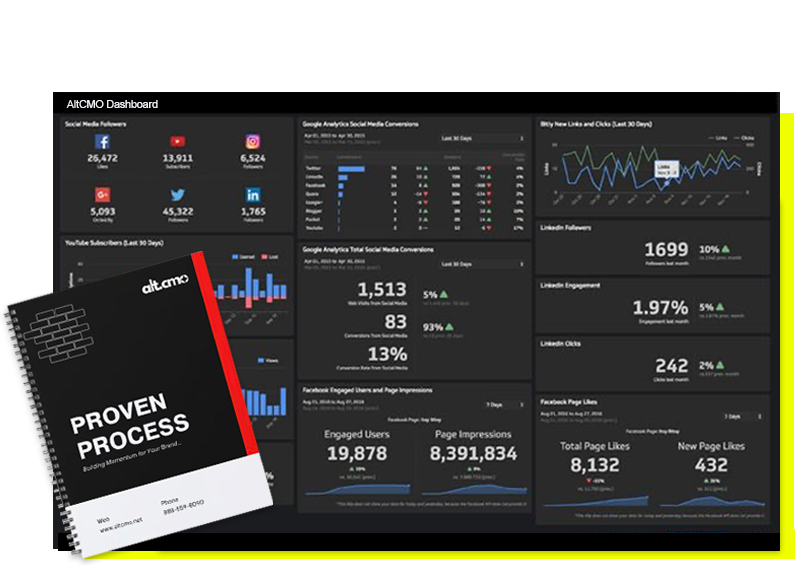Help Establish Efficient Tech Stack

Overview
This plan aims to help your team implement an efficient marketing tech stack that enhances your marketing efforts, improves efficiency, and drives better results.
The plan will be divided into key stages: Preparation, Requirements Analysis, Tool Selection, Integration, Training, Implementation, and Monitoring.
Preparation
Client Briefing
- Conduct an initial meeting with you to understand your business objectives, marketing strategies, current tools, and pain points.
- Gather information on your budget, team structure, and desired outcomes.
Audit Current Tools
- Perform a comprehensive audit of your existing marketing tools and technologies.
- Identify gaps, redundancies, and inefficiencies in the current tech stack.
Research and Benchmarking
- Research industry best practices and benchmark against competitors.
- Identify new technologies and trends that could benefit your organization..
Requirements Analysis
Identify Business Needs
- Work with you to identify key business needs and objectives that the marketing tech stack should support.
- Focus on areas such as lead generation, customer engagement, data analysis, and automation.
Stakeholder Interviews
- Conduct interviews with key stakeholders, including marketing, sales, IT, and customer service teams.
- Gather their input on requirements, preferences, and pain points related to marketing technology.
Feature Prioritization
- Prioritize the features and functionalities that are most important to your team.
- Develop a list of must-have, nice-to-have, and optional features.
Tool Selection
Research and Shortlist Tools
- Research and create a shortlist of marketing tools that meet the identified requirements.
- Consider categories such as CRM, email marketing, social media management, analytics, and automation.
Evaluate Tools
- Evaluate each tool on the shortlist based on criteria such as functionality, ease of use, integration capabilities, scalability, and cost.
- Use online reviews, case studies, and product demos to inform the evaluation.
Vendor Comparison
- Compare vendors based on their offerings, pricing, support, and reputation.
- Develop a comparison matrix to facilitate decision-making.
Select Tools
- Select the tools that best meet your needs and budget.
- Ensure the selected tools integrate well with each other and with your existing systems.
Integration
Integration Planning
- Develop a detailed integration plan outlining how the new tools will be integrated with the existing tech stack.
- Identify any potential challenges and plan for data migration, API connections, and custom integrations.
Integration Execution
- Work with your IT team or external vendors to execute the integration plan.
- Ensure seamless data flow between tools and systems.
Testing and Validation
- Conduct thorough testing to ensure all integrations work as expected.
- Validate data accuracy, functionality, and performance.
Training
Training Needs Assessment
- Assess the training needs of your team to effectively use the new tools.
- Identify key users and their specific training requirements.
Develop Training Materials
- Create comprehensive training materials, including user guides, video tutorials, and FAQs.
- Tailor materials to your specific use cases and workflows.
Conduct Training Sessions
- Conduct hands-on training sessions for your team.
- Provide ongoing support and resources to ensure users are comfortable with the new tools.
Implementation
Rollout Plan
- Develop a detailed rollout plan outlining the implementation timeline, key milestones, and responsibilities.
- Coordinate with your team to ensure a smooth transition.
Soft Launch
- Conduct a soft launch of the new tech stack with a small group of users to identify any issues.
- Gather feedback and make necessary adjustments before the full rollout.
Full Implementation
- Execute the full rollout of the new marketing tech stack.
- Monitor the implementation process and address any issues promptly.
Monitoring
Performance Tracking
- Establish KPIs and metrics to track the performance and effectiveness of the new marketing tech stack.
- Use analytics tools to monitor key metrics such as lead conversion rates, campaign performance, and ROI.
Regular Reviews
- Conduct regular reviews with you to assess the performance of the new tools and identify areas for improvement.
- Provide recommendations for optimizing the tech stack based on performance data.
Ongoing Support
- Offer ongoing support and maintenance to ensure the tech stack continues to meet your needs.
- Stay updated on new features, updates, and best practices to keep the tech stack current.
Deliverables
Audit Report
- A comprehensive report detailing the audit of the existing marketing tools and identifying gaps and inefficiencies/
Requirements Document
- A document outlining the business needs, requirements, and prioritized features for the new marketing tech stack/
Tool Comparison Matrix
- A comparison matrix summarizing the evaluation of shortlisted tools and vendors/
Integration Plan
- A detailed plan for integrating the new tools with the existing tech stack/
Training Materials
- Comprehensive training materials tailored to your company’s needs/
Rollout Plan
- A detailed plan for the rollout and implementation of the new tech stack/
